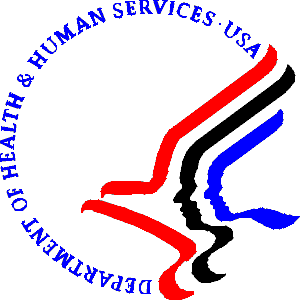June 2013 – The Internal Revenue Service recently issued a revised Form 720, Quarterly Federal Excise Tax, giving taxpayers a designated space to report the monies collected for payment of the Patient Centered Outcomes Research Institute (PCORI) fee. The new form was issued in the nick of time, as many businesses (and their health insurance agents) were beginning to wonder how they’d handle their first fee payment due this July, given there was no appropriate space to record it on the old form. The PCORI fee funds federal comparative effectiveness research, and taxpayers may be subject to it if they sponsor self-insured health plans or if they issue certain health insurance policies. For this purpose, a “taxpayer” may include any employer or insurer and may include tax-exempt organizations and governments (such as states and Indian tribes). The first due date for the Form 720 is July 31 for certain taxpayers.
NAHU’s counsel at Ernst Young have prepared the following alert for its clients to explain the way the PCORI fee works in detail. This alert provides, in Q&A format, information for both plan sponsors of self-insured health plans subject to the PCORI fee and issuers of specified health insurance policies subject to the PCORI fee. Employers that sponsor group health plans and insurers that issue accident and health insurance policies will need to determine their liability for the PCORI fee.
Q-1: Which types of health plans are subject to the PCORI fee?
A-1: A specified insurance policy and a self-insured health plan are subject to the PCORI fee if they provide “accident and health” coverage for individuals that are not “excepted” benefits. (See Q&A-4 below for a discussion of excepted benefits.)
Q-2: Are both fully insured and self-insured health plans subject to the PCORI fee?
A-2: Yes. The plan sponsor is responsible for the PCORI fee if the health plan is self-insured. (See discussion below at Q&A-13). The insurance company issuer is responsible for the PCORI fee for specified insurance policies.
Q-3: What health plans are not subject to the PCORI fee?
A-3: An accident or health plan or insurance policy is not subject to the PCORI fee if it provides only “excepted benefits” (See Q&A-4 below) or if the benefits cover individuals primarily working and residing outside of the U.S.
Additionally, employee assistance programs (EAPs), disease-management programs and wellness programs that do not provide significant benefits in the nature of medical care or treatment are not subject to the PCORI fee. A health FSA is also excluded from the PCORI fee, provided that it meets the regulatory requirements under Treas. Reg. Section 54.9831-1(c)(3)(v), which requires that (i) the FSA participant be offered other group health plan coverage (that is not limited to excepted benefits described in Q&A-4 below) and (ii) the maximum amount of reimbursement cannot exceed the greater of two times the employee’s salary reduction or $500, plus the salary reduction election. If both requirements are not met, then the FSA will be subject to the PCORI fee.
Q-4: What are excepted benefits not subject to the PCORI fee?
A-4: The following benefits are treated as excepted benefits that are not subject to the PCORI fee:
• Accident or disability income insurance
• Coverage that is supplemental to liability insurance
• General liability insurance and automobile liability insurance
• Workers’ compensation
• Automobile medical payment insurance
• Credit-only insurance
• Coverage for on-site medical clinics
• Separate policies providing limited scope dental or vision benefits, long-term care, nursing home care, home healthcare or community-based care
• Separate policies providing coverage only for a specified disease or illness or hospital indemnity or other fixed indemnity insurance
• Separate policies providing Medicare supplemental health insurance
Q-5: Are governmental insurance programs subject to the PCORI fee?
A-5: Governments (i.e., the federal government, states and Indian tribes) that sponsor health plans are subject to the PCORI fee. However, under Section 4377, governmental health programs generally are not subject to the PCORI fee, including Medicaid and Medicare.
Q-6: Are other health insurance policies excluded from the PCORI fee?
A-6: Regulations exclude stop-loss coverage and indemnity reinsurance from the definition of specified health insurance for purposes of the PCORI fee. For these purposes, stop-loss insurance is a contract between a plan sponsor maintaining a self-insured health plan and an insurer that contracts to pay amounts to the plan sponsor once health claims exceed a fixed amount, provided that the plan sponsor and not the insurer retains liability to provide benefits. Indemnity reinsurance is a contract between two insurance companies in which the issuing insurance company retains liability to provide benefits but the reinsurer indemnifies the issuing insurance company.
Q-7: Does the PCORI fee apply to COBRA coverage offered to former employees and dependents under an employer health plan?
A-7: Yes.
Q-8: Does the PCORI fee apply to an employer health plan covering only retirees or former employees?
A-8: Yes.
Q-9: How much is the PCORI fee?
A-9: For the first plan or policy year ending after September 30, 2012, the PCORI fee is $1 per the number of “covered lives” entitled to receive accident and health benefits under the plan or policy. (See Q&As 14 — 19 for a discussion of covered lives.) For subsequent plan or policy years, the PCORI fee is $2 per covered life, subject to indexing for years beginning after September 30, 2014. The PCORI fee is scheduled to terminate after seven years and does not apply to plan or policy years ending after September 30, 2019.
Q-10: When is the PCORI fee due?
A-10: The PCORI fee is due on July 31 of the immediately following calendar year. Thus, for the first plan or policy year ending after September 30, 2012, the PCORI fee is due July 31, 2013. For a health plan or policy with a non-calendar year-end, the PCORI fee would still be due on July 31 of the calendar year immediately following the end of the plan or policy year. For example, if the plan or policy year ended May 31, 2014, then the PCORI fee is due July 31, 2015. The regulations provide no extensions for filing the Form 720 to report and pay the PCORI fee.
Q-11: How is the PCORI fee paid?
A-11: The PCORI fee is paid by filing an IRS Form 720. Although the Form 720 is titled Quarterly Federal Excise Tax Return, the form is filed annually to report and remit the PCORI fee. The Form 720 requires the average number of covered lives being reported for self-insured plans and for specified health insurance policies to be reported in Part II, No. 133.
Q-12: How does a taxpayer report the PCORI fee on a Form 720 if the taxpayer is also filing the Form 720 for other excise taxes on a quarterly basis?
A-12: The Instructions for Form 720 state that a taxpayer filing Form 720 on a quarterly basis to report other excise taxes should leave the PCORI fee section blank for the quarterly filing dates other than July 31. The PCORI fee is reported only on the Form 720 that is filed for the July 31 due date. If a taxpayer has no other excise taxes to report on Form 720, then the only Form 720 that is filed to report and remit the PCORI fee is the July 31 Form 720.
Q-13: Who is liable to pay the PCORI fee?
A-13: For insured health benefit plans, the health insurance issuer is liable to report and remit the PCORI fee.
For self-insured plans, the default rule is that the plan sponsor is liable for paying the fee. The identity of the plan sponsor may depend upon the fact pattern. In the case of a single employer that sponsors a self-insured health plan for its employees, the plan sponsor is the employer. In the case of a controlled group of corporations in which employees of multiple employers in the controlled group participate in a single plan, the plan sponsor is the entity designated as the plan sponsor.
If the health plan is sponsored by an employer organization (e.g., a union), the organization is the plan sponsor. If the health plan is part of a multi-employer arrangement, then the board of trustees of the multi-employer plan is the plan sponsor. A cooperative or association that establishes or maintains a plan for its members is a plan sponsor. Finally, for a plan in which assets are set aside in a voluntary employee benefit association trust (VEBA), the VEBA is the plan sponsor and the PCORI fee may be paid from the assets of the VEBA.
Q-14: How are covered lives determined for purposes of calculating the PCORI fee?
A-14: Covered lives means all employees, dependents and retirees covered under the health plan or all individuals entitled to health benefits under specified insurance policy. There are different permissible counting methods depending on whether the health plan is self-insured or provided through insurance.
Q-15: How do you count the average number of covered lives for purposes of determining the PCORI fee amount with respect to a self-insured health plan?
A-15: Plan-sponsors of self-insured plans may choose the following three methods:
1. Actual count method — This method involves counting the total number of lives covered for each day of the plan year and then dividing this total by the number of days in the plan year.
2. Snapshot method — There are two permissible options under the snapshot method to count the average number of covered lives. This method involves selecting date(s) in each calendar quarter of the plan year to count the number of covered lives and then dividing this total by the total number of dates selected. (Selected dates must be within three-day ranges).
a. Snapshot “count” method — under this method, the actual covered lives on selected dates are counted.
b. Snapshot “factor” method — under this method, the number of lives covered on selected dates is the sum (i) of the number participants with self-only coverage, plus (ii) the number of participants with other than self-only coverage (i.e., covering a spouse or dependents) multiplied by a factor of 2.35.
3. Form 5500 method — This method involves determining the average number of covered lives based on a health plan’s Form 5500 for the plan year.
a. For employee-only coverage plans — the average number of covered lives equals the sum of total participants covered at beginning of plan year and end of plan year, according to its Form 5500, divided by two.
b. For employee and dependent plans — the average number of covered lives equals the sum of total participants covered at the beginning of the plan year and at the end of the plan year, according to its Form 5500.
Q-16: If the employer files the Form 5500 in October (i.e., the extended filing date for Form 5500s), will the employer still be able to use the Form 5500 method?
A-16: No, an employer may not use the 5500 method for a reporting year under the PCORI fee unless that year’s Form 5500 is actually filed by the due date (July 31) for the PCORI fee.
Q-17: What if an employer files a Form 5500 for an “omnibus” or “umbrella” health plan that includes both insured and self-insured health options? Can the Form 5500 method still be used?
A-17: Yes, but the plan sponsor may exclude individuals from the count for covered lives if those individuals participate only in the insured options under the health plan. Thus, the numbers on the Form 5500 may not “tie” to the covered lives in this case.
Q-18: How are covered lives determined under a specified insurance policy?
A-18: Health insurance issuers may choose to use the actual count or snapshots methods described above for self-insured health plans or they may use the member-months method or state-form method described below.
1. Member-months method — Under this method, the number of lives under all policies in effect for a calendar year, as reported for member months on the National Association of Insurance Commissioners’ supplemental healthcare exhibit filed for that calendar year, are added and divided by 12.
2. State-form method — Under this method, health insurance issuers that are not required to file a NAIC financial statement may count the number of lives under all policies in effect for the calendar year using the same methodology as the member-months method, but utilizing an alternative form that is filed with the issuer’s state of domicile.
To calculate the average number of covered lives under the member-months or state-form method for the first year, health insurance issuers using one of these methods must calculate the average number of covered lives under all policies in effect for the 2012 and multiply that number by one-quarter. This number is treated as the average number of covered lives for policies with policy years ending on or after October 1, 2012, and before January 1, 2013. To calculate the average number of covered lives under these methods in the last year that the PCORI fee applies, health insurance issuers must calculate the average number of covered lives for all policies in effect during the 2019 calendar year and multiply that number by three-quarters. This number is deemed to be the average number of lives covered for policies with policy years ending on or after January 1, 2019, and before October 1, 2019 (the expiration date of the fee.)
Some health insurance issuers have found that the average number of covered lives varies from method to method and may need to test the average number of covered lives under each method to determine which one results in the lowest PCORI fee.
Q-19: May plan sponsors and health insurance issuers change the method to calculate the average number of covered lives for purposes of calculating the PCORI fee?
A-19: A plan sponsor must use the same method to calculate the average number of covered lives for the duration of a plan year, but may use a different method from one plan year to the next. A health insurance issuer must also use the same method for the duration of the year, but may change from year to year if it uses either the actual count or snapshot method, provided that it uses the same method for computing the average lives covered for all policies for which liability is reported on the Form 720. A health insurance issuer using the member-months or state-form method may not switch methods.
Q-20: Will the PCORI fee apply multiple times if accident or health coverage is provided to an individual through both an insured policy and a self-insured plan?
A-20: Yes, the PCORI fee independently applies to specified health insurance policies under Section 4375 and to applicable self-insured health plans under Section 4376. Thus, a person may be counted as a covered life under each. For example, if the employer provides insured coverage that constitutes specified health insurance, the health insurance issuer would pay the PCORI fee on the covered lives for the specified insurance policy. If the employer sponsors other self-insured health plans in which the same individual participates (such as an HRA), the plan sponsor would be responsible for the PCORI fee on the covered lives under the self-insured plan.
Q-21: What if an employer establishes and maintains multiple health plans? May the employer combine these plans for purposes of counting the number of covered lives?
A-21: Yes. For purposes of determining the PCORI fee for self-insured arrangements, self-insured plans established and maintained by the same plan sponsor that have the same plan year may be treated as a single plan. For example, if a plan sponsor provides an HRA and another applicable self-insured health plan that provides major medical coverage, the HRA and the self-insured medical plan may be treated as one applicable self-insured health plan if the HRA and the self-insured plan have the same plan year.
Q-22: Are there special rules for calculating the PCORI fee for HRAs or for an FSA that does not meet the exception (see Q&A-3 above)?
A-22: In limited circumstances, HRAs and FSAs (if the FSA does not meet the exception from the PCORI fee) may be treated as having one covered life per employee covered and spouses and dependents need not be counted. This special rule does not apply, however, to the extent that the HRA or FSA (that does not meet the exception from the PCORI fee) are aggregated with other self-insured health plans that have the same plan year for purposes of counting covered lives and the individuals covered by the HRA or the FSA participate in one of the other self-insured health plans.
Q-23: Is the amount of the PCORI fee tax deductible?
A-23: Yes, it is tax deductible.
Q-24: Are there any special transition rules?
A-24: Yes. Regulations provide that an issuer using the actual count method with a policy year that ends on or after October 1, 2012, could begin counting lives covered under a policy as of May 14, 2012 (30 days after the date of publication of the proposed regulations), rather than the first day of the policy year, and divide by the appropriate number of days remaining in the policy year. Similarly, for policy years that end on or after October 1, 2012, but that began before May 14, 2012, the regulations state that issuers using the snapshot method could use counts from quarters beginning on or after May 14, 2012, to determine the average number of lives covered. Rules for the first-year and last-year use of the member-months and state-form methods are discussed above in Q&A 19.
The regulations also permit a plan sponsor to use any reasonable method to determine the average number of lives covered for a plan year beginning before July 11, 2012 (90 days after the publication date of the proposed regulations), and ending on or after October 1, 2012.
Taxpayers that issue insurance policies for accident and health coverage and plan sponsors of self-insured health plans (including tax-exempt organizations, states and Indian tribes) may be subject to the PCORI fee. The first due date for payment of the fee through the filing of Form 720 is July 31, for taxpayers whose plan or policy year ends after September 30, 2012. Such taxpayers will need to review their plans or policies now to determine if there are any applicable exclusions, what methods should be followed and whether any special transition rules apply for calculating and paying the PCORI fee amount.
Source: National Association of Health Underwriters (NAHU)
www.nahu.org
 Oct. 1, 2013 – The Office for Civil Rights and Office of the National Coordinator for Health Information Technology have collaborated to develop model Notices of Privacy Practices for health care providers and health plans to use to communicate with their patients and plan members.
Oct. 1, 2013 – The Office for Civil Rights and Office of the National Coordinator for Health Information Technology have collaborated to develop model Notices of Privacy Practices for health care providers and health plans to use to communicate with their patients and plan members.
 By Larry Grudzien, J.D.
By Larry Grudzien, J.D. By Kristi R. Gauthier, Esq.
By Kristi R. Gauthier, Esq. By Fritz Teutsch
By Fritz Teutsch

